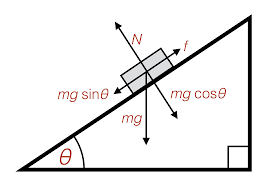The Jasper Series is a technology-enhanced learning project based on Anchored Instruction. In which instruction is “situated in engaging, problem-rich environments that allow sustained exploration by students and teachers.” The designers were responding to research indicating that students “do extremely poorly when faced with situations that require them to generate the relevant subproblems and figure out what data are needed to satisfy the subgoals that they generate on their own” (Cognition and Technology Group at Vanderbilt, 1992a). While students can calculate numbers in isolated situations, they are relatively weaker at understanding how to apply these abilities within problem-solving contexts. The series of videos provides a guiding framework and presents “meaningful problems for students to solve that capture the intricacies of real-world mathematical problem solving” (Vye et al., 1997). Students explore information in interdisciplinary contexts, generate solutions collaboratively and critically reflect on their existing conceptions. This approach significantly differs from traditional direct instruction methods and recognizes “that the course of learning is not a simple process of accretion, but involves progressive consideration of alternative perspectives and the resolution of anomalies” (Confrey, 1990).
I think that many of the current video-based supports that exist for math are essentially virtual lectures and typically focus on procedural understanding. Many Khan Academy lessons demonstrate how to carry out calculations using a variety of operations and algorithms. One website that uses video in a somewhat similar way to the Jasper Series is called When Math Happens – 3 Act Math (https://whenmathhappens.com/3-act-math/). Like the Jasper Series, students generate an understanding of the sub-problems and the relevant information collaboratively. In each problem, three short video clips provide a real-world engaging context and helps to guide student thinking. The first video provides a visual context for a real-word problem. The second video scaffolds students’ generation of knowledge about sub-problems which they will need to solve the larger problem. The last video provides feedback for the student so they can evaluate their solutions. Some problems provide a “sequel” so students can extend their thinking. The technology serves to create a context which guides, motivates, and provides feedback for students. Student can repeatedly explore the videos for relevant information and visual clues help support their decisions regarding how to use the information.
Anchored Instruction connects to my understanding of Problem-based Learning. This year my class started a school snack cart to raise money to purchase technology. The math required to run the store provided content for PBL instruction in class. The kids had to figure out how to balance inventory, calculate profit margins, make decisions about which products to buy, etc. We used Excel Online to work with the secretaries to manage the account. They used iPads to compare prices, record sales, evaluate nutritional information, etc. One thing I have come to understand while teaching with a PBL design is the significant PCK required to differentiate the experience for all learners when engaging in real-world explorations. The experience was great for many students, but it became complex very quickly. Some kids became lost due to “the intricacies of real-world mathematical problem solving” (Vye et al., 1997). Inclusion of all students depended on the anticipation of the math concepts that arise throughout the experience. I found this significantly more difficult than when I was selecting the content to introduce. Technology definitely helps, in this case digital pictures and video, because the students can access the problem through visuals instead of text. It also supported by reducing demands on memory. Many kids would take pictures of objects relevant to the problem and, through apps like Explain Everything, connect their mathematical thinking to the pictures.
Cognition and Technology Group at Vanderbilt. (1992). The Jasper Experiment: An Exploration of Issues in Learning and Instructional Design. Educational Technology Research and Development, 40(1), 65-80. Retrieved from http://www.jstor.org.ezproxy.library.ubc.ca/stable/30219998
Confrey, J. (1990). A review of the research on student conceptions in mathematics, science, and programming. Review of research in education, 16, 3-56.
Vye, Nancy J.; Goldman, Susan R.; Voss, James F.; Hmelo, Cindy; Williams, Susan (1997). Complex mathematical problem solving by individuals and dyads. Cognition and Instruction, 15(4), 435-450.
